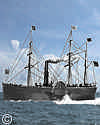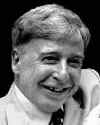
Born 27 Sep 1925; died 10 Apr 2013 at age 87.
Robert Geoffrey Edwards was a British medical researcher who, with Patrick Steptoe, perfected in-vitro fertilization (IVF) of the human egg. Their technique made possible the birth of Louise Brown, the world's first “test-tube baby,” on 25 Jul 1978, to parents that had previously spent nine years trying to start a family. Edwards became the sole recipient of the Nobel Prize in Physiology or Medicine, in 2010, “for the development of in vitro fertilization.” (His colleague, Steptoe could not be a posthumous recipient; he died in 1988.) They began in the late 1960s, but their research had to be privately financed, since the medical establishment found the idea of a “test-tube baby” repugnant. So they worked in a secluded laboratory at a small hospital in Oldham. It took persistence with over 100 frustrating failures before the first success. Millions of births have since been enabled by IVF.«
Robert Geoffrey Edwards was a British medical researcher who, with Patrick Steptoe, perfected in-vitro fertilization (IVF) of the human egg. Their technique made possible the birth of Louise Brown, the world's first “test-tube baby,” on 25 Jul 1978, to parents that had previously spent nine years trying to start a family. Edwards became the sole recipient of the Nobel Prize in Physiology or Medicine, in 2010, “for the development of in vitro fertilization.” (His colleague, Steptoe could not be a posthumous recipient; he died in 1988.) They began in the late 1960s, but their research had to be privately financed, since the medical establishment found the idea of a “test-tube baby” repugnant. So they worked in a secluded laboratory at a small hospital in Oldham. It took persistence with over 100 frustrating failures before the first success. Millions of births have since been enabled by IVF.«
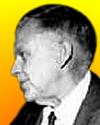
Born 27 Sep 1920; died 17 Jan 1992 at age 71.
American oceanographer and meteorologist who was an expert on physical oceanography, primarily in the interpretation of data associated with large scale ocean dynamics. He had a long standing interest in the Gulf Stream. He spent most of his career conducting research at the prestigious Oceanographic Institute in Woods Hole, Massachusetts. Considered one of the most influential oceanographers of his time, Stommel proposed many theories that were later proven to be correct by other scientists. He applied electromagnetic measurements to oceanic flows, the dynamics of estuaries and the related problem of hydraulic controls, and the interaction of nonlinear eddy-like phenomena (hetons).
American oceanographer and meteorologist who was an expert on physical oceanography, primarily in the interpretation of data associated with large scale ocean dynamics. He had a long standing interest in the Gulf Stream. He spent most of his career conducting research at the prestigious Oceanographic Institute in Woods Hole, Massachusetts. Considered one of the most influential oceanographers of his time, Stommel proposed many theories that were later proven to be correct by other scientists. He applied electromagnetic measurements to oceanic flows, the dynamics of estuaries and the related problem of hydraulic controls, and the interaction of nonlinear eddy-like phenomena (hetons).
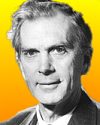
Born 27 Sep 1918; died 14 Oct 1984 at age 66. quotes
English radio astronomer who worked on radar for British wartime defense. After WW II, he became a leader in the development of radio astronomy by designing revolutionary radio telescope systems to use for accurate location of weak radio sources. With his aperture synthesis technique of interferometry, he and his team located radio-emitting regions on the sun and pinpointed other radio sources so that they could be studied in visible light. Ryle observed the most distant known galaxies of the universe. His 1C - 5C Cambridge catalogues of radio sources led to the discovery of numerous radio galaxies and quasars. For his aperture synthesis technique, Ryle shared the 1974 Nobel Prize for Physics (with Antony Hewish), the first such recognition of astronomical research. He was the 12th Astronomer Royal (1972-82).«
English radio astronomer who worked on radar for British wartime defense. After WW II, he became a leader in the development of radio astronomy by designing revolutionary radio telescope systems to use for accurate location of weak radio sources. With his aperture synthesis technique of interferometry, he and his team located radio-emitting regions on the sun and pinpointed other radio sources so that they could be studied in visible light. Ryle observed the most distant known galaxies of the universe. His 1C - 5C Cambridge catalogues of radio sources led to the discovery of numerous radio galaxies and quasars. For his aperture synthesis technique, Ryle shared the 1974 Nobel Prize for Physics (with Antony Hewish), the first such recognition of astronomical research. He was the 12th Astronomer Royal (1972-82).«
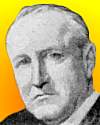
Born 27 Sep 1877; died 27 Nov 1956 at age 79. quotes
Waldemar Bernhard Kaempffert was an American science writer and museum director who joined the staff of Scientific American after graduating from college, and within three years became its managing editor. In 1916, he began editting Popular Science Monthly. From 1922 he was contributing science articles to the New York Times, where he became its Editor of Science and Engineering (1927-1953). For a short, and unhappy time (1928-1931) he was director of the Museum of Science and Industry in Chicago.«
Waldemar Bernhard Kaempffert was an American science writer and museum director who joined the staff of Scientific American after graduating from college, and within three years became its managing editor. In 1916, he began editting Popular Science Monthly. From 1922 he was contributing science articles to the New York Times, where he became its Editor of Science and Engineering (1927-1953). For a short, and unhappy time (1928-1931) he was director of the Museum of Science and Industry in Chicago.«
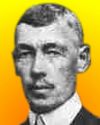
Born 27 Sep 1852; died 29 Jul 1932 at age 79. quotes
British civil engineer who proposed and designed the first Aswan (Assuan) Dam (1898-1902) on the River Nile and executed major irrigation projects in South Africa and Turkey. He was born studied engineering in India before moving to Egypt in 1883, becoming director-general of reservoirs. On being asked to find a means of storing Nile water to allow the growth of an extra crop of cotton, he found a depression at Wadi Rayan, into which part of the annual flood waters could be diverted, then fed back into the river in the dry season. When persuaded to build a dam, he designed the Aswan Dam to allow the silt-laden waters of the early weeks of the annual flood to pass through, and only capture for storage the clear water that flowed later in the season.
British civil engineer who proposed and designed the first Aswan (Assuan) Dam (1898-1902) on the River Nile and executed major irrigation projects in South Africa and Turkey. He was born studied engineering in India before moving to Egypt in 1883, becoming director-general of reservoirs. On being asked to find a means of storing Nile water to allow the growth of an extra crop of cotton, he found a depression at Wadi Rayan, into which part of the annual flood waters could be diverted, then fed back into the river in the dry season. When persuaded to build a dam, he designed the Aswan Dam to allow the silt-laden waters of the early weeks of the annual flood to pass through, and only capture for storage the clear water that flowed later in the season.
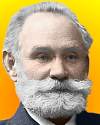
Born 27 Sep 1849; died 27 Feb 1936 at age 86. quotes
Russian physiologist, who was awarded the 1904 Nobel Prize in Physiology or Medicine. He pioneered the investigation that he named the “conditioned reflex.” In the experiment which made him famous, he trained a hungry dog to associate the sound of a bell with receiving food. Thereafter, the dog would salivate on hearing the bell alone. This work began as merely a study in digestion, with a series of experiments on dogs to investigate how digestive secretions are regulated. He identified three stimuli that caused dogs to begin to salivate: seeing, smelling, or tasting food. He realized, digestion is partly controlled by sensory stimuli. In 1903, Pavlov published his results on this learned— “conditioned reflex,” (as opposed to an innate reflex, like a reaction to pain). He worked actively in the lab until his death at age 87.«[DSB gives birth date as 27 Sep 1849. EB gives Old Style: 14 Sep 1849 (New Style: 26 Sep 1849).]
Russian physiologist, who was awarded the 1904 Nobel Prize in Physiology or Medicine. He pioneered the investigation that he named the “conditioned reflex.” In the experiment which made him famous, he trained a hungry dog to associate the sound of a bell with receiving food. Thereafter, the dog would salivate on hearing the bell alone. This work began as merely a study in digestion, with a series of experiments on dogs to investigate how digestive secretions are regulated. He identified three stimuli that caused dogs to begin to salivate: seeing, smelling, or tasting food. He realized, digestion is partly controlled by sensory stimuli. In 1903, Pavlov published his results on this learned— “conditioned reflex,” (as opposed to an innate reflex, like a reaction to pain). He worked actively in the lab until his death at age 87.«[DSB gives birth date as 27 Sep 1849. EB gives Old Style: 14 Sep 1849 (New Style: 26 Sep 1849).]
Ivan Pavlov: Exploring the Animal Machine, by Daniel Todes. - book suggestion.
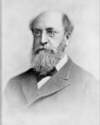
Born 27 Sep 1824; died 26 Nov 1896 at age 72.
American astronomer whose star catalogs helped fix the list of constellations of the Southern Hemisphere Gould's early work was done in Germany, observating the motion of comets and asteroids. In 1861 undertook the enormous task of preparing for publication the records of astronomical observations made at the US Naval Observatory since 1850. But Gould's greatest work was his mapping of the stars of the southern skies, begun in 1870. The four-year endeavor involved the use of the recently developed photometric method, and upon the publication of its results in 1879 it was received as a signicant contribution to science. He was highly active in securing the establishment of the National Academy of Sciences.
American astronomer whose star catalogs helped fix the list of constellations of the Southern Hemisphere Gould's early work was done in Germany, observating the motion of comets and asteroids. In 1861 undertook the enormous task of preparing for publication the records of astronomical observations made at the US Naval Observatory since 1850. But Gould's greatest work was his mapping of the stars of the southern skies, begun in 1870. The four-year endeavor involved the use of the recently developed photometric method, and upon the publication of its results in 1879 it was received as a signicant contribution to science. He was highly active in securing the establishment of the National Academy of Sciences.
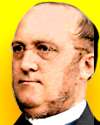
Born 27 Sep 1818; died 25 Nov 1884 at age 66. quotes
Adolphe Wilhelm Hermann Kolbe was a German chemist who achieved the first widely recognized synthesis of an organic compound, defying the prevailing doctrines of vitalism by producing acetic acid from inorganic substances during his doctoral research. This was revolutionary as, according to vitalism, organic compounds could only be formed by living organisms. In 1859, he further advanced the field by synthesizing salicylic acid using phenol and carbon dioxide, a breakthrough which paved the way for cost-effective production of acetylsalicylic acid, more commonly known as aspirin. These seminal reactions are collectively termed as Kolbe’s synthesis. For chemical education, he emphasizing empirical methodology and practical learning.«
Adolphe Wilhelm Hermann Kolbe was a German chemist who achieved the first widely recognized synthesis of an organic compound, defying the prevailing doctrines of vitalism by producing acetic acid from inorganic substances during his doctoral research. This was revolutionary as, according to vitalism, organic compounds could only be formed by living organisms. In 1859, he further advanced the field by synthesizing salicylic acid using phenol and carbon dioxide, a breakthrough which paved the way for cost-effective production of acetylsalicylic acid, more commonly known as aspirin. These seminal reactions are collectively termed as Kolbe’s synthesis. For chemical education, he emphasizing empirical methodology and practical learning.«
The Quiet Revolution: Hermann Kolbe and the Science of Organic Chemistry, by Alan J. Rocke. - book suggestion.
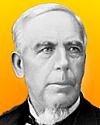
Born 27 Sep 1814; died 11 Jun 1895 at age 80.
American astronomer and mathematician who noted in about 1860 that there were several zones of low density in the minor-planet population. These gaps in the distribution of asteroid distances from the Sun are now known as Kirkwood gaps. He explained the gaps as resulting from perturbations by Jupiter. An object that revolved in one of the gaps would be disturbed regularly by the planet’s gravitational pull and eventually would be moved to another orbit. Thus gaps appeared in the distribution of asteroids where the orbital period of any small body present would be a simple fraction of that of Jupiter. Kirwood showed that a similar effect accounted for gaps in Saturns rings.
American astronomer and mathematician who noted in about 1860 that there were several zones of low density in the minor-planet population. These gaps in the distribution of asteroid distances from the Sun are now known as Kirkwood gaps. He explained the gaps as resulting from perturbations by Jupiter. An object that revolved in one of the gaps would be disturbed regularly by the planet’s gravitational pull and eventually would be moved to another orbit. Thus gaps appeared in the distribution of asteroids where the orbital period of any small body present would be a simple fraction of that of Jupiter. Kirwood showed that a similar effect accounted for gaps in Saturns rings.
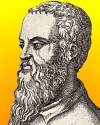
Born 27 Sep 1507; died 30 Jul 1566 at age 58.
French naturalist and physician who contributed substantially to zoology by his descriptions of marine animals, primarily of the Mediterranean Sea. After studying at Montpellier, he later travelling widely through Europe with his patron Cardinal Tournon. Returning to Montpellier in 1545, he taught medicine. His real interest, however, was zoology, and in 1554 he published his massive compendium on aquatic life, Libri de piscibus marinis in quibus verae piscium effigies expressae sunt, which covered far more marine life than any earlier work in the field. This laid the foundation for later ichthyological research and was the standard reference work for over a century. He also published various other works on diagnosis and several pharmacological works.
French naturalist and physician who contributed substantially to zoology by his descriptions of marine animals, primarily of the Mediterranean Sea. After studying at Montpellier, he later travelling widely through Europe with his patron Cardinal Tournon. Returning to Montpellier in 1545, he taught medicine. His real interest, however, was zoology, and in 1554 he published his massive compendium on aquatic life, Libri de piscibus marinis in quibus verae piscium effigies expressae sunt, which covered far more marine life than any earlier work in the field. This laid the foundation for later ichthyological research and was the standard reference work for over a century. He also published various other works on diagnosis and several pharmacological works.
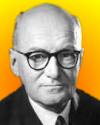
Died 27 Sep 1968 at age 69 (born 15 May 1899).
British metallurgist, internationally known for his work on the formation of alloys and intermetallic compounds. During WW II, he supervised many government contracts for work on complex aluminium and magnesium alloys. He established that the microstructure of an alloy depends on the different sizes of the component atoms, the valency electron concentration, and electrochemical differences. Hume-Rothery rules are an empirical guide to when two metals are sufficiently similar to be completely miscible (form a single phase at all relative concentrations). They are: (1). Atomic radii no more than about 15% different. (2). Pure metals have the same crystal structure. (3). Atoms have similar electronegativities. (4). Atoms have the same valence.
British metallurgist, internationally known for his work on the formation of alloys and intermetallic compounds. During WW II, he supervised many government contracts for work on complex aluminium and magnesium alloys. He established that the microstructure of an alloy depends on the different sizes of the component atoms, the valency electron concentration, and electrochemical differences. Hume-Rothery rules are an empirical guide to when two metals are sufficiently similar to be completely miscible (form a single phase at all relative concentrations). They are: (1). Atomic radii no more than about 15% different. (2). Pure metals have the same crystal structure. (3). Atoms have similar electronegativities. (4). Atoms have the same valence.
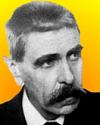
(EB)
Died 27 Sep 1940 at age 83 (born 7 Mar 1857).
Austrian psychiatrist and neurologist whose made the first use of a shock therapy. He investigated the connections between thyroid function, goitre and cretinism. On his advice the Government, some time later, started selling salt with added iodine, in the areas most affected by goitre. His main life's work built on an earlier observation that certain nervous disorders improved in patients who had caught a fever-inducing illness. He applied this in the treatment of syphilitic meningoencephalitis, or general paresis, by deliberately inducing malaria (chosen because it could be controlled with quinine). The method brought a previously incurable fatal disease under medical control and earned him the 1927 Nobel Prize in Physiology or Medicine.
Austrian psychiatrist and neurologist whose made the first use of a shock therapy. He investigated the connections between thyroid function, goitre and cretinism. On his advice the Government, some time later, started selling salt with added iodine, in the areas most affected by goitre. His main life's work built on an earlier observation that certain nervous disorders improved in patients who had caught a fever-inducing illness. He applied this in the treatment of syphilitic meningoencephalitis, or general paresis, by deliberately inducing malaria (chosen because it could be controlled with quinine). The method brought a previously incurable fatal disease under medical control and earned him the 1927 Nobel Prize in Physiology or Medicine.
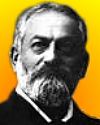
Died 27 Sep 1911 at age 67 (born 7 Aug 1844).
Auguste Michel-Lévy was a French geologist and mineralogist who was a pioneer in microscopic petrology, the study of the origin, composition, structure, and alteration of rocks. He was particularly interested in rocks of volcanic origin. He was the first scientist in France to examine thin slices of rock with a polarizing microscope to identify the mineral content. In his published papers, he described the granulite group, and dealt with pegmatites, variolites, eurites, the ophites of the Pyrenees, the extinct volcanoes of Central France, gneisses, and the origin of crystalline schists. He became inspector-general of mines, and in 1870 joined the Geological Survey of France, becoming its director in 1887.«
Auguste Michel-Lévy was a French geologist and mineralogist who was a pioneer in microscopic petrology, the study of the origin, composition, structure, and alteration of rocks. He was particularly interested in rocks of volcanic origin. He was the first scientist in France to examine thin slices of rock with a polarizing microscope to identify the mineral content. In his published papers, he described the granulite group, and dealt with pegmatites, variolites, eurites, the ophites of the Pyrenees, the extinct volcanoes of Central France, gneisses, and the origin of crystalline schists. He became inspector-general of mines, and in 1870 joined the Geological Survey of France, becoming its director in 1887.«

Died 27 Sep 1838 at age 61 (born 8 Feb 1777). quotes
French chemist who discovered the element iodine. As the son of a saltpeter manufacturer from Dijon, he grew interested in chemistry and was apprenticed to a pharmacist. While in military service as a pharmacist, he became the first to isolate pure morphine from opium (1804). He returned to assist at his father's saltpeter business, where the ashes of kelp seaweed were leached for sodium and potassium salts using sulphuric acid. In 1811, from the mother liquor, he observed rising clouds of purple vapour which condensed on cold surfaces as dark crystals with a metallic lustre. He thought these could be a new element, but lacked ability to fully confirm his suspicion. This was later verified by Joseph-Louis Gay-Lussac and Humphry Davy.« more
French chemist who discovered the element iodine. As the son of a saltpeter manufacturer from Dijon, he grew interested in chemistry and was apprenticed to a pharmacist. While in military service as a pharmacist, he became the first to isolate pure morphine from opium (1804). He returned to assist at his father's saltpeter business, where the ashes of kelp seaweed were leached for sodium and potassium salts using sulphuric acid. In 1811, from the mother liquor, he observed rising clouds of purple vapour which condensed on cold surfaces as dark crystals with a metallic lustre. He thought these could be a new element, but lacked ability to fully confirm his suspicion. This was later verified by Joseph-Louis Gay-Lussac and Humphry Davy.« more
Iodine: Why You Need It, Why You Can't Live Without It, by Charles Harvard Gibbs-Smith. - book suggestion.
Died 27 Sep 1835 at age 43 (born 27 Jan 1792).
clockmaker and inventor who turned from his self-taught skills making jewellery and timepieces to invent the first successful coal burning locomotive constructed in the U.S. Earlier, railroads used imported locomotives. On 4 Jan 1831, the Baltimore and Ohio Railroad Company advertised a prize of $4,000 for the best engine in trials conducted in Jun 1831. Davis created his York locomotive and won the trial. He then worked developing the engine for that railroad, but died only a few years later, in a train derailment accident.«
clockmaker and inventor who turned from his self-taught skills making jewellery and timepieces to invent the first successful coal burning locomotive constructed in the U.S. Earlier, railroads used imported locomotives. On 4 Jan 1831, the Baltimore and Ohio Railroad Company advertised a prize of $4,000 for the best engine in trials conducted in Jun 1831. Davis created his York locomotive and won the trial. He then worked developing the engine for that railroad, but died only a few years later, in a train derailment accident.«
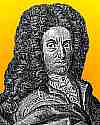
Died 27 Sep 1737 at age 77 (born 21 Aug 1660).
French engineer who authored the first book on bridge building, Traité des Ponts, in 1716. It covered bridges in masonry and timber, foundations, piers and centering, the velocity of water, and such reference tools as a dictionary of terms and a list of edicts. He had previous written a treatise of roads, published in 1693. Originarily a medical doctor, he became a naval engineer and later on general inspector of the Ponts et Chaussées. He also authored books on fortifications, the antiquities of his native town Nîmes, and a first manual for watercolor practitioners. Watercolor had also some military interest, as it was needed for mapmakers in order to impart the correct hue, and this explains why Gautier choose to write this treatice.
French engineer who authored the first book on bridge building, Traité des Ponts, in 1716. It covered bridges in masonry and timber, foundations, piers and centering, the velocity of water, and such reference tools as a dictionary of terms and a list of edicts. He had previous written a treatise of roads, published in 1693. Originarily a medical doctor, he became a naval engineer and later on general inspector of the Ponts et Chaussées. He also authored books on fortifications, the antiquities of his native town Nîmes, and a first manual for watercolor practitioners. Watercolor had also some military interest, as it was needed for mapmakers in order to impart the correct hue, and this explains why Gautier choose to write this treatice.

In 2003, the first European mission to the Moon was launched aboard an Ariane-5 rocket. The SMART-1 exploration probe, along with two commercial satellites, blasted off from the European Space Agency's launch centre in Kourou, French Guiana. SMART-1 will take 15 months to reach lunar orbit, covering 62 million miles with only 13 gallons of fuel. The 170-lb probe will scan the Moon for up to 30 months to try to answer tantalising questions about the chemical composition of the Moon and whether it contains water. It is powered by a revolutionary new "ion drive", a solar-powered engine that could one day be used for long-distance space flight. With a cost of £70 million, SMART-1 is at a relatively low price for a space mission.
In 1960, Europe's first "moving pavement", the travelator, opened at Bank Underground station. It links the Waterloo & City line station at Bank with the main tube station concourse. Just over 300 feet long, it has a gradient of 8 degrees.
In 1950, the answering machine was invented on this day.
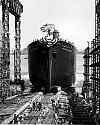
In 1941, the first Liberty ship, the S.S. Patrick Henry, was launched. Three months later, on 30 Dec 1941, it was delivered at Baltimore, Maryland, to the U.S. Maritime Commission. It was built in 244 days by the Bethlehem-Fairfield Shipbuilding Co., of that city. It was the first of 2,741 Liberty ships launched, of which 385 were built at Baltimore, in a three-year WW II emergency merchant ship construction program. The S.S. Patrick Henry could average a speed of about 11 knots, and had a general cargo capacity of 9,146 tons. The American patriot Patrick Henry had ended a speech (23 Mar 1775) with the phrase “give me Liberty, or give me death,” Hence the emergency ships became known as Liberty ships, after President Roosevelt said their mission was to bring liberty to European allies with relief supplies.«
Liberty Ships: The History of the Emergency Type Cargo Ships... , by L. A. Sawyer and W. H. Mitchell. - book suggestion.
In 1938, British ocean liner "Queen Elizabeth," then the largest passenger liner ever built, was launched at Clydebank in Scotland.
In 1922, scientists at the Naval Aircraft Radio Laboratory near Washington, D.C., demonstrated that if a ship passed through a radio wave being broadcast between two stations, that ship could be detected, the essentials of radar.
The Invention That Changed the World: How a Small Group of Radar Pioneers Won the Second World War, by Robert Buderi. - book suggestion.
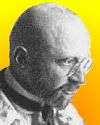
Fritz Haber
In 1910, a U.S. patent for the Production of Ammonia was issued to Fritz Haber and Robert Le Rossignol (No. 971,501). This process could produce ammonia on a large scale directly from its component gases, hydrogen and nitrogen, by passing a mixture of them over heated finely-divided osmium metal used as a catalyst. A typical pressure of 175 atmospheres and a temperature of 550ºC could easily give an 8% by volume yield of ammonia. Although nitrogen makes up 80% of the air, as a gas it is quite unreactive. Despite its ready availability, nitrogen gas had previously been difficult to combine in a chemical form. Once nitrogen has been chemically combined in the form of ammonia, many other nitrogen compounds can be made.«
more

In 1908, the first production Ford Model T car left the factory. It was assembled at the Piquette Avenue Plant in Detroit, Michigan, which had built various earlier models (Models B, D, F, K, N, R, S) in prior four years. The Model T was introduced on 1 Oct 1908. It had a 20-hp 4-cylinder engine, with versions starting at $850. The first 12,000 model Ts were built at this plant, before production was transferred to a new, larger factory at highland Park. It was produced for 19 years, until by 26 May 1927, some 15 million had been manufactured, making a historic impact on society. Refining the process over the years reduced production time by 1913 from 12-hr 8-min to 1-hr 33-min. By the end of Model T era, a vehicle left the assembly line every 24-sec. Black paint was the quickest to dry.«
The Model T: A Centennial History, by Robert Casey/. - book suggestion.

In 1892, book matches were patented by Joshua Pusey of Lima, Ohio, No. 483165. He subseqerntly sold the patent rights to the Diamond Match Company of Barberton, Ohio. The Diamond Match Company was formulated as a conglomerate and built by absorbing a number of smaller match manufacturing companies. They were also the first company involved in book match making of any significance. In 1895, production exceeded 150,000 matchbooks a day. Diamond's objective was to produce a quality matchbook for sale to the public (not given freely as was traditional fifty years later). The first Diamond matchbooks assembled were a dangerous and flimsy novelty, but they were improved. Later, they were sold to companies and carried their advertising.
In 1854, the first great disaster involving an Atlantic Ocean liner occurred when the steamship S.S. Arctic sank with over 300 lives lost. When launched in 1850, this oak-framed, pine-planked, masted side-paddle steamer of the Collins Line was regarded as the best-outfitted ship plying between England and New York, and with steam power could average thirteen knots speed. Its last voyage began on 20 Sep 1854 from Liverpool. Six days out at sea, in a fog bank off Cape Race, Newfoundland, it was in collision with an iron-hulled French ship, the Vesta. Despite bow damage to each, both deemed it advisable to try to reach land. Only the Vesta ever reached land, three days later. The Arctic had lost power, its pumps ceased, and sank. Its loss prompted attention to the need for on-board foghorns.«
more
The Sea Shall Embrace Them: The Tragic Story of the Steamship Arctic, by David W. Shaw. - book suggestion.
In 1831, the first annual meeting of the British Association for the Advancement of Science was held in York. The British Association had been established in the same year by Sir David Brewster, R.I. Murchison and others. One of the association's main objectives was to “promote the intercourse of those who cultivate science with each other.” The second annual meeting was held at Oxford (1832), and in following years at Cambridge, Edinburgh, Dublin, Bristol, Liverpool, Newcastle, Birmingham, Glasgow, Plymouth, Manchester and Cork respectively, until returning to York in 1844. It is incorporated by Royal Charter dated 21 Apr 1928.«*
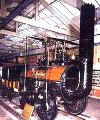
Locomotion No. 1
In 1825, the first locomotive to haul a passenger train was operated by George Stephenson's Stockton & Darlington's line in England. The engine "Locomotion No. 1" pulled 34 wagons and 1 solitary coach on its journey of 21 miles from Shildon, via Darlington to Stockton in County Durham. This epic journey was the launchpad for the development of the railways, which was to take the world by storm over the following years. The Stockton to Darlington line was the first railway in the world which carried passengers and freight, both largely using steam locomotives, and to any kind of meaningful timetable. Earlier, other railways had carried passenger coaches adapted for rails, but only on an occasional basis.
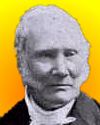
Stirling
In 1816, Robert Stirling, age 26, applied for a patent for his "Heat Economiser" at the Chancery in Edinburgh, Scotland (No. 4081/1816). The patent described principles of heat regeneration to reduce fuel consumption in glass and other furnaces, with elements of what is now called the Stirling Cycle engine. The regenerative principle was to save fuel by heating the air required for combustion with the waste heat of the funace. The hot air or caloric engine design in his 1816 patent "came to nothing." His regenerative furnace system was crude, but made practical by Siemens forty years later. By 1 Feb 1827, Stirling took out another patent for a caloric engine which worked successfully (No. 5456) and again on 1 Oct 1840 (No. 8652).«

